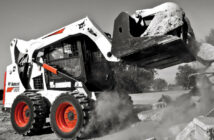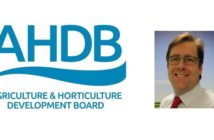Timing the harvest and transport of highly perishable, hand-picked crops such as strawberries so these delicate products reach consumers at peak flavor and freshness is an intricate dance that partners Mother Nature with manual labour.
However, many of the “smart farming” techniques and technologies that help growers harvest more of what they sow faster and more efficiently have focused primarily on row crops like corn and soybeans, bypassing growers of high-value fresh produce.
“The large machines used to harvest row crops such as wheat, corn and soybeans provide a natural platform for improving efficiency,” said Richard Sowers, a professor of industrial and enterprise systems engineering and of mathematics at the University of Illinois. “However, the story is radically different in high-value, hand-picked crops like strawberries, which may be many times more valuable per acre than corn. With hand-picked crops, precision agriculture lags significantly behind.”
“A hundred acres of corn may have a value of just $800,000, while the same number of acres planted in strawberries may be worth $7.5 million,” said Devasia Manuel, a recent Illinois alumnus. “Yet, strawberry harvesters use little to no precision agriculture techniques. It’s quite astonishing.”
Manuel, currently a machine learning researcher with Google, was the lead author on a paper with Sowers which explored a mathematical model for determining the optimal time for transporting a strawberry crop from the field to cold storage.
Sowers and Manuel’s methodology is described in a paper published in the journal Natural Resource Modeling.
Sowers and Manuel, then a graduate student at Illinois, observed workers harvesting strawberries on Crisalida Farms in Oxnard, California. The researchers’ algorithm explored the spoilage the grower might incur if they sent partially loaded trucks to the cooling stations, rather than waiting until their trucks were loaded to capacity to transport the fruit to cold storage.
Hand-picked fruits such as strawberries begin to decay immediately after being harvested, and the market value of the crop may decline by as much as 10 percent per hour if the harvested produce sits in the hot sun waiting to be transported to refrigerated storage, Sowers said.
“Growers would like to transport their crops to cooling stations according to an optimal policy, but that policy has to reflect a trade-off between the loss in quality and the rate of harvest,” Sowers said.
Unlike machine-harvested crops, harvesting of hand-picked crops varies from worker to worker and by time of day as workers become hot and fatigued, the researchers noted in the study.
“If your workers pick 90 percent of a load in just 15 minutes and then slow down because of the heat, it would make sense to get the load to cold storage even though the truck is only partially full,” Sowers said. “That’s a very simplified picture, but that’s what we were trying to get at. We thought through how to model these trade-offs and did some optimization and simulations, and we found that some significant savings might be possible.”
Sowers declined to cite dollar values because their findings were theoretical and the model would need to be calibrated to growers’ actual harvest and spoilage data.
However, the findings were encouraging, Sowers said, and the potential financial rewards should motivate researchers and crop producers to explore opportunities to apply precision agriculture techniques to the management of hand-picked and specialty crops.




